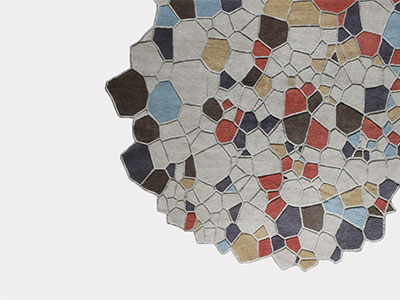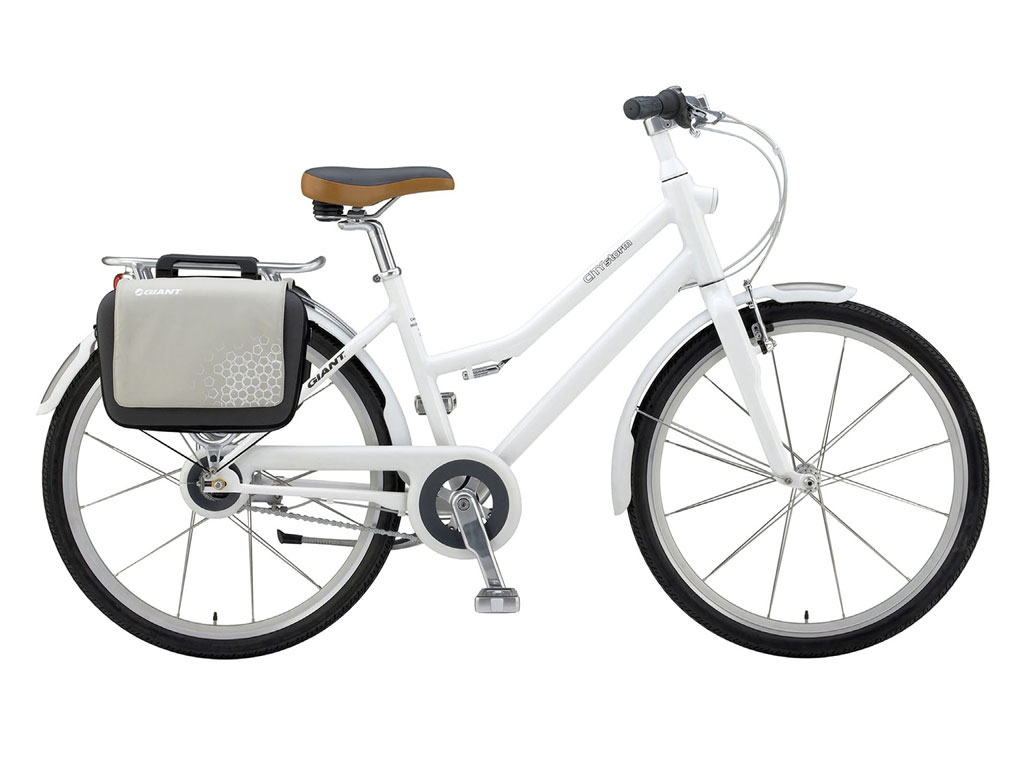

A fascinating interview with British designer MICHAEL YOUNG, who spoke to HOMA DESIGN MAGAZINE (DM) from the breathtaking setting of his residence on the secluded, car-less island off Hong Kong he calls home, between a glass of Prosecco and the moving, vivid memories of long-lost soul-brother and fellow designer James Irvine.
Young tells DM about the hard beginnings which shaped his character, his attraction for Asia and how he came to devote his attention to supporting young, talented designers, with the help of his many friends from around the world, through some visionary projects. "Pirate, but corporate", an expression he used during the interview, strikingly describes how he never wanted to create or impose a method, but rather privilege creativity, though never losing sight of the ultimate goal of design, that of serving Economy.

What stands at the origin of your journey in Design, and what is the purpose of your creative activity?
It starts off from a very basic beginning where, at school, I was dyslexic. I couldn’t read, I couldn’t write, so I failed everything. I guess ultimately, I just had to find a way to make a living and my only release from education, from academia, was music and art, but I was never good at drawing, I was never good at fashion, nor at graphic design. I way I found of fundamentally making a living was “making things”. Back in London, around 1988, I saw people like Ron Arad, Tom Dixon, Danny Lane, “making things”. At the time, my concern was: “How am I gonna get through life?” I started to learn making things with my hands, so I had to learn about shapes and about the whole process of manufacturing. My origins are incredibly humble. I’m 57 this year, and back in the time Design didn’t really exist outside of Memphis, which was the first thing I ever saw. I thought: “what are these guys doing, making these beautiful shapes and colours?”
I didn’t have a vision, it was the need for survival, for putting food on the table and trying to make something, which motivated me.
How did your approach to design evolve over the years, if it did?
I guess it ultimately did, quite accidentally. At the time the Design industry was really small, everything was really transparent. There was a handful of journalists in the UK, and they started to like what I did and published it. Then I’d get a Conran shop saying “Hey, can we put this in the shop?” It was a really step-by-step process. I guess I learned by making things.
I’d make a light and then I thought I could make a chair out of that light. There was no deep story, and it was a period in the UK scene which was very musical, with Blur, the Oasis, and there was this whole hip-hop movement in art, with Damien Hirst. I was kind of lucky that Design was empty then. There was a space for Design, and I just happened to be from that generation. The magazines and the media wanted to talk about it and galleries were starting to pop up around London. There was demand, it wasn’t really like I tried to fuel it myself, it was a symbiotic relationship. Design was considered the poor man’s art of creativity and of making a living, and it was hard!

What does experimenting mean to you, and why is it important to experiment in design?
I think the roots of that come from looking at anything I could, as a broke designer trying to make a living. I wasn’t born a visionary engineer, and it’s really become part of my DNA to keep on evolving my way of living and my way of working by looking at things around me. It’s not different today as it was 30 years ago, the world is just a lot easier to navigate for me now, just think of how technology has evolved tremendously since. But I get bored very easily
of doing the same thing, I’ll throw something away very quickly once I’ve managed to understand how it’s made and what I can do with it. Hence, I don’t really work with a lot
of mainstream companies. I don’t want to. Don’t get me wrong, it’s very prestigious, but it’s just not enough for me. I wanted to find out what was beyond the traditional techniques of manufacturing whereby I could explore my own universe. I’m a Hawking fan, and I put myself into space and explore it.
What does it personally mean to be a designer of success?
When you suffer from dyslexia, you search deeper into other areas of your understanding, which is different from that of other people, to make sense of the world. I had very low self-esteem, because people call you stupid, and when people call you stupid you’ve got to find a way to show them, you’re not stupid. I did that by exploring music, and colour, and fashion. It was like teaching a blind man colour for me to understand education and language. It taught me to be very sympathetic to people around me.
It gave me a very grounded sense of equality. Design doesn’t make you greater or bigger and we’re all in this together. I got involved in a beautiful community very early on, supporting each other and sharing ideas. That has always driven me to keep on searching for new ideas, cross- pollinating different processes and methods just to keep driving myself forward.

You’ve been based in Honk Kong in the past 20 years. What attracted you to the Asian culture? How does it differ from Western design culture?
We live in parallel universes, like Mac and PC. I don’t think these two worlds will ever come together. My curiosity for Asia came very bizarrely when the great grandson of Chiang Kai-shek called me and said “I’ve been buying your furniture and I want you to come to Taiwan”. So 20 year ago I went to Taipei. Those were also the early days of Foxconn, when we’d just discovered Bluetooth, and rechargeable batteries, and I thought this was an insane opportunity. If I could apply my knowledge from the design industry in Europe and put it into technology, that would lead to a whole new way of living with objects in the home. That was my first entry point into Asia. I used to think that I was bringing a lot to China by being European, but they learn so fast. What they don’t have is the same heritage. So, the heritage that I’ve got from living in Clerkenwell, in a squat, and all I went through, is the one thing that you can’t copy. Then I discovered how hard and fast people worked here. I discovered how industry was not about me and my ego. I went to the factory, and I saw all these people trying to earn money to feed their families. It changed my perspective on things, it was about all these people not losing their jobs because of my ideas. Today with this new company we’re opening in China, I’m setting myself up as a brand rather than as a designer, not because of me, but to make something all these people working around me can survive off when I’m gone. We’re all working hard to make this universe work. It’s exciting, because everybody’s got their position within this entity we’ve created in Shenzhen, and it’s huge. It’s nothing I expected ever to happen in my life.
What have you retained from Western design culture?
Of course I miss Western culture, on a daily basis. I miss Italy tremendously, everybody having such a great life with all the food, the wine, the landscapes. I do go to Tuscany a lot, I love it, and I love the fact that it’s a culture where you can be present in your everyday life. In China you can’t. Everything is moving so fast. I miss just going to the pub and reading the newspaper... That’s all I wanted to do in life: going to the pub and reading the newspaper with a pint. I was brought up in Sunderland, and you were taught that when you left school, you would go to work, and then at 5 o’clock the pub would open, and you would go to the pub
and have five pints of lager, and then you would go home. At 15 years old that was my understanding of the world.

How do you reconcile product innovation and technology on one hand, and craftsmanship on the other hand?
There are some things I just don’t know about what I do, but a lot of technology is actually quite craft-based. Carbon-fibre is a craft and it’s considered higher level technology. The method behind it is actually rather hands- on. I’m quite emotional when I meet the clients, and if I can look them in the eyes and sense their soul, they can guide me. It’s a very important part of beginning the process of working together. I guess I try and understand exactly how things are made and why they are made, the impact they have and the people who are making them. It’s quite an emotional journey. I simplify every piece of information they give me; I’m not trying to design an aircraft, I can’t process the information.

Is such extreme design experimentation possible/ replicable outside Hong Kong? What can you do in China, in terms of design, that you cannot do in the rest of the world?
Everything we do that is experimental, we create ourselves. We work with a lot of factories, like WeNext in China, who can do anything we want by 3D printing. What’s intriguing in China is that people do not say “no”, regardless of whether something can or cannot be done. I’m setting up my own eyewear brand in China. I can go back to carving for the frame, for instance, with incredible amount of detail, since they still have the skill to do that, and I can transfer this handcraft to tech materials such as carbon- fibre or acetate. This cross-pollination is what creates innovation. We could 3D-print everything, but we’d rather use the guys who do the real deal. This is where the opportunity exists. I’ve just been to Japan where we’re working on this project, called Craft x Tech, with this company who has been making cast-iron teapots for eight hundred years. We’ve been experimenting with 3D printed surfaces, combining them with their traditional cast-iron process. We’ll soon be having a teapot exhibition! I guess it’s just this to and from, the carbon-fibre factory, a guy carving monkeys in Mongolia or someone doing cloisonné (an ancient metalwork decorative technique, Ed.). We have it all here. When I go back to the UK, it vanishes, and that makes me really sad. But we are manufacturing the Mini Moke again in the UK, and that’s comforting!
What makes you click in accepting a new design project? What does it need to have in order to inspire you?
I guess I would need to believe it’s not already on the market. Also, it would need to have a sense of purpose. Despite this dyslexic/artist’s part of my brain, I still have some commercial reason, so I believe Design is for Economy. James Irvine, who was a very good friend of mine, always said to me, when I left college: “Michael, you need to decide if you’re an artist or a designer, for if you’re a designer, you have accountability for industry.” I learned a lot of lessons from important friends, so I decided early on that my purpose was to create economy for companies, yet I don’t want to design two hundred versions of the same chair, eventually one runs out of space! I want to design one chair, and then move on. I just want to keep on moving, to survive by staying on the front of the bus. If I can do that, that’s inspiring, enough to wake up in the morning.

Your portfolio spans over a wide range of products and industries. Is there a particular product category or industry that fascinates or inspires you more than others? If yes, why?
I’ve been down so many rabbit holes within industry. There’s quite a few projects that I actually adore, like the stick light I did with Tom Dixon. It was the first time I did something in plastic in London. Also, things like the doghouse I did for Magis, which is not a commercial product. That came out of having a glass of Prosecco in Treviso with Mr Perazza (Eugenio Perazza, founder of Magis, Ed.) and it was the most insane thing. We got the sketch book out over lunch, eating fish. The design came together, and I finally realised that I had some understanding of form in a complex matrix. I later applied that learning from Magis to Giant bicycles. I think of anything, my childhood dream came together with the Mini-Moke project. I’ve always loved the Mini-Moke. When I was 12, I used to think it was a fun thing, and actually we’ve helped getting it back into production. We’ve redesigned it, and I still own the IP on it. We did it in the simplest way, that honoured the original designer. Getting this British icon back onto the market is probably what I’m most proud of in my life.

What’s on the horizon for you?
What I started doing to make a living was working at Tom Dixon’s, and welding and selling stuff to the Conran shop, never left my heart. So now I’ve been working on my own home furniture collection for two years, purely for the Chinese market. We launched it in Design Shanghai
to see what would happen. The response was incredible, hence we’re going to open around 12 Michael Young stores around China with that collection. Together with our business partner, our commercial manager for China, we decided to call them “Michael Young Museums”. It might sound a bit arrogant, but the reason for that is that I want to use them as a vehicle to have my own collection and invite all the companies I’m working with around the world to put things into the space in an easy environment, so everyone can get involved. What I realised was that everything I do should be part of a home. We will open the first ones this year in Shanghai. We will open the first base-camp in Shenzhen in three weeks time.
I transported my studio from Belgium to Shenzhen to create a didactic environment for young designers. I will bring lots of other people and try and cross-over with other designers from around the world. We’ll educate a lot of the young designers here. We’ll do workshops, we’re going to open a bar. The first one will be open by the end of the month, then we’ll start spinning out around China. The good thing about China is that it’s a scalable country. It’s a crazy opportunity, I can bring the whole universe I’ve been existing into China. I’m not into establishing a process about the way we work; I want it to be intuitive. Its’a a lot more pirate, but it’s corporate. We want to bring all the people we know in that global community together.
Born in 1966 in Sunderland, in the North East of England, Michael Young started a career in design almost accidentally: affected by dyslexia, he experimented with different art forms to “get through life” before becoming fascinated by the work of designers such as Ron Arad and Tom Dixon.
He graduated from Kingston University in 1992 and founded his own design studio. Considered a sophisticated minimalist, he quickly gained international recognition with his extraordinary, eclectic work. He moved to Hong Kong in 2006 and continued his experimental work with ever increasing, global success. Lately, among the many projects he is involved in around the world, Young has passionately engaged in giving younger-generation, talented designers new opportunities through the foundation of design didactic farms across China.
michael-young.com
Copyright HOMA 2024
This article is from "des.mag." - Issue No.3, a Homa editorial project to promote design culture.
Editor in Chief: Federico Rebaudo.
Project Coordination: Federico Gallina
Art Direction: Sara Marabini
Editorial Coordination: Studio Volpi srl
For further Information and Press Contacts: info@homaeurope.eu
